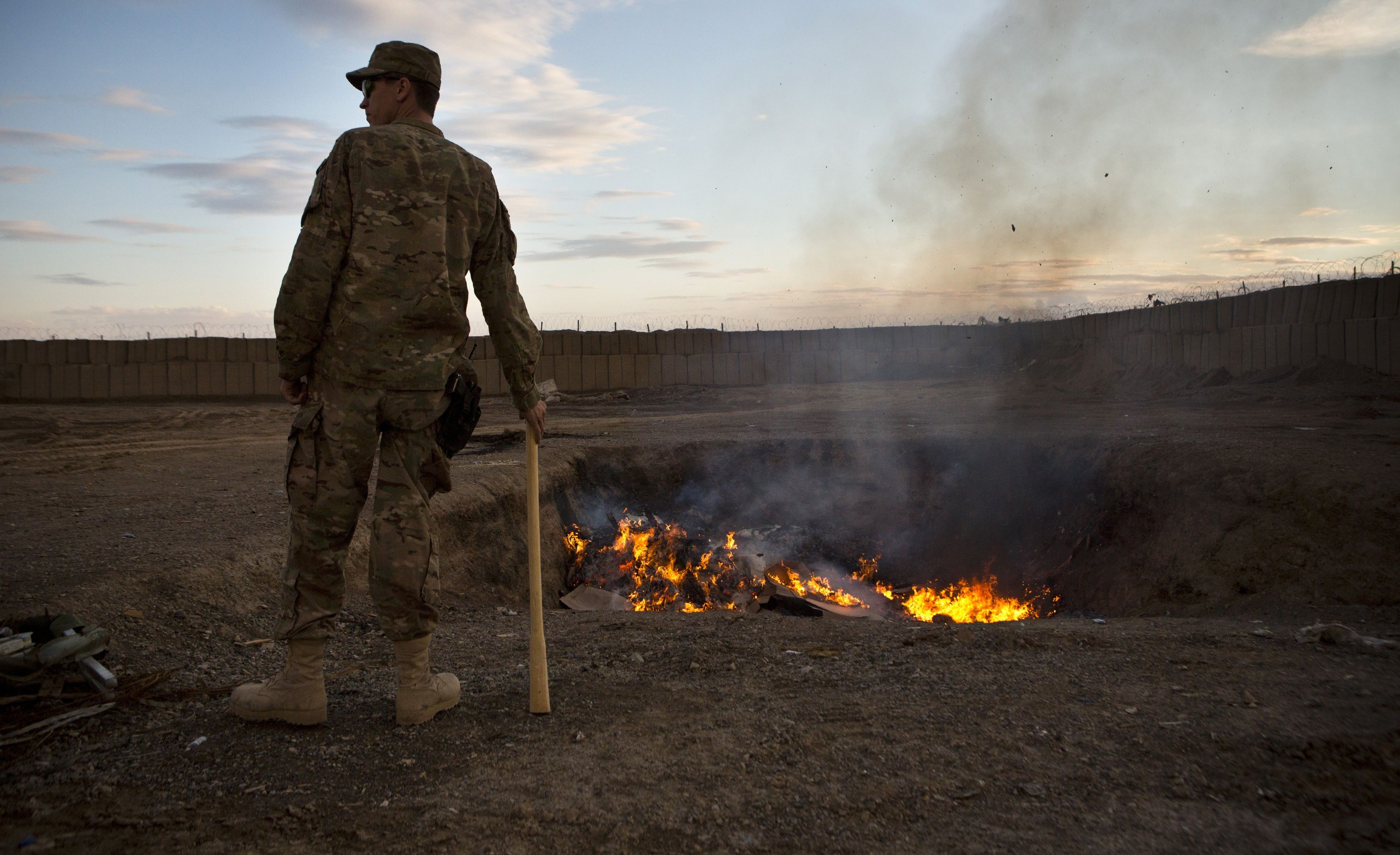For over four decades, Afghanistan has been trapped in a relentless cycle of war and destruction.
While much of the world’s attention has focused on the political and security dimensions of this conflict, another crisis has unfolded — one that will haunt the country for generations. Afghanistan’s environment has suffered profound devastation, and the consequences for its people are dire.
From poisoned water sources to barren lands, the natural world has become another casualty of war, with the most vulnerable communities bearing the brunt of this catastrophe.
Every war in Afghanistan’s modern history has left an ecological footprint that will endure long after the last bullets have been fired. The use of depleted uranium munitions has left behind radioactive waste. The destruction of irrigation networks has crippled agriculture. Rising respiratory diseases and cancer rates, linked to exposure to hazardous materials, are only beginning to be understood.
Even back in 2017, reports indicated that many Afghans increasingly viewed toxic pollution as a graver threat than the Taliban. And, all warring parties bear responsibility for this destruction.
According to Richard Bennett, the U.N. Special Rapporteur on Human Rights in Afghanistan, environmental degradation caused by war is a human rights issue that has been largely ignored. He argues that it must take center stage, as its implications are vast. Bennett is advocating for mechanisms to explore transitional justice, including possible reparations for the environmental impact on affected communities.
“The water, soil and air of Afghanistan are polluted due to decades of explosive substances that have not been cleaned up, affecting public health, particularly child health. All parties to the conflict are responsible,” he said. “While we have only scratched the surface, scientific research on the impact is starting to emerge.”
Leading these research efforts at the Raoul Wallenberg Institute in Sweden, Afghan scholar Dr. Haroun Rahimi is working alongside Bennett and U.N. Special Rapporteur on Toxics and Human Rights, Dr. Marcos Orellana, who is compiling a report for the U.N. General Assembly on the impact on populations of toxics after military interventions. In February, they co-hosted a webinar with the Environmental Law Institute in Washington D.C., aiming to push the crisis to the forefront of global discourse on Afghanistan.
“International law offers limited avenues for holding powerful states accountable, and domestic courts often struggle with the challenge of sovereign immunity,” says Rahimi. “Moreover, states credibly accused of serious violations frequently deflect accountability by offering humanitarian assistance as a symbolic substitute, thus avoiding genuine responsibility. Our most viable path forward lies in strategic litigation and leveraging the rule of law within some of the accused states to secure a measure of justice for affected communities. But for such litigation to succeed, we must first lay the groundwork through rigorous advocacy and scientific research.”
Mass displacement
The roots of Afghanistan’s environmental crisis stretch back well before the Soviet invasion in 1979, with earlier episodes of ecological harm tied to colonial and Cold War interventions.
During colonial wars, serious acts of environmental destruction were committed — for instance, in the last Anglo-Afghan War, the nascent Air Force of British India bombed Kabul and Nangarhar, leaving long-term ecological and social scars. Even before the Soviet invasion, both the United States and the Soviet Union sought to industrialize Afghan agriculture during the Cold War, often with disastrous consequences.
By the early 1980s, nearly 4.3 million Afghans had sought refuge in Pakistan and Iran, abandoning entire villages and leaving once-fertile farmlands to deteriorate. The displacement of communities disrupted traditional land-use patterns, straining resources in areas where refugees resettled.
In the wake of the Soviet withdrawal, the Mujahedeen civil war — particularly the intense fighting in Kabul during the early 1990s — further decimated the urban environment and infrastructure. The capital was turned into rubble, with forests in nearby provinces stripped for firewood and water systems damaged beyond repair.
Afghanistan’s forests have been another casualty. In the 1970s, the country had extensive woodlands, particularly in the eastern provinces. Today, only 2 percent of that forest cover remains. Years of conflict accelerated deforestation as communities turned to logging for survival, either to sell timber or to use it for heating and cooking. Insurgent groups and warlords further exploited the country’s forests, smuggling vast quantities of timber across borders. The consequences have been severe; soil erosion, desertification and flash flooding, making it even harder for displaced communities to return and rebuild.
Poisoned lives
Afghanistan’s water crisis is not just about scarcity — it is about contamination. Bombings and industrial-scale military operations have introduced hazardous chemicals into rivers and groundwater.
During the Battle of Jalalabad in 1989, the government of Mohammad Najibullah reportedly used Soviet-made Scud-B missiles, which left behind toxic residues that continue to pollute the environment. Moreover, more recent reports indicate that the Taliban have incorporated toxic chemicals into their suicide bombs, further exacerbating the contamination of water and soil.
In urban areas, the collapse of sanitation systems has further polluted water supplies, leading to outbreaks of waterborne diseases.
Air pollution is another crisis, with war playing a direct role. During the U.S. military presence, the widespread use of burn pits released toxic fumes into the air, exposing both soldiers and civilians to hazardous chemicals. Reports have linked these emissions to chronic respiratory illnesses and a surge in cancer rates. Women and children are disproportionately affected, as they are often the most exposed to unsafe water, poor sanitation, and indoor air pollution from burning wood and other fuels.
According to UNICEF, more than 160,000 acute respiratory infections cases were reported at the start of last year across Afghanistan, “largely due to severe weather conditions and air pollution,” with children under five making up 62 percent of the cases.
Perhaps the most insidious environmental consequence of war is soil contamination. For instance, Pakistan’s nuclear tests conducted in Baluchistan, near Afghanistan’s Helmand and Kandahar provinces, have led to significant soil contamination and a rise in cancer cases in bordering Afghan communities — an alarming example of cross-border environmental consequences. Also, the use of depleted uranium in missile strikes has left behind radioactive waste, seeping into the land and water. Farmers unknowingly cultivate crops in contaminated soil, while children play in areas littered with toxic remnants of past battles. Adding to this danger, landmines and other unexploded battlefield detritus contaminate at least 724 million square meters of land in Afghanistan, with only two out of 29 provinces believed to be free of landmines, according to Human Rights Watch, and the Trump administration's funding cuts along with the USAID shutdown are expected to impact mine clearance operations. The long-term public health consequences — including birth defects and rising cancer rates — are only beginning to be fully understood.
In one of the most extreme examples of modern military firepower, the United States dropped the GBU-43/B Massive Ordnance Air Blast — commonly known as “the mother of all Bombs” — in Nangarhar province in 2017. The bomb, the largest non-nuclear weapon ever used in combat, devastated large swaths of mountainous terrain, raising serious concerns about soil toxicity, unexploded ordnance and ecological disruption in one of Afghanistan’s most biodiverse regions.
War has not only ravaged Afghanistan’s environment but also its infrastructure. Roads, bridges and irrigation systems — essential for agriculture and economic stability — have been systematically destroyed. In a country where 70 percent of the population depends on farming, the destruction of irrigation networks has rendered vast areas of land unusable, exacerbating food insecurity. Since 2008, U.S. and NATO-equipped Afghan Armed Forces regularly employed heavy aerial bombardments in efforts to repel Taliban offensives. These sustained military campaigns significantly contributed to soil degradation and the contamination of water sources. The economic toll of environmental destruction has made post-war recovery even more difficult, trapping communities in deeper poverty.
A call for justice
The environmental consequences of war are not abstract — they manifest in the lives of Afghan civilians. This crisis is not an inevitable byproduct of conflict — it is a preventable disaster that demands urgent global attention. Just as the international community invested in military operations, it has a moral and legal obligation to assist in environmental recovery.
“It is unacceptable for the parties to the conflict to simply walk away from the environmental damage they have caused. They are obliged to make genuine efforts to repair and restore the environment as well as to pay compensation to affected communities,” says Bennett.
Reforestation programs, water purification initiatives and infrastructure rebuilding efforts must be prioritized. Additionally, there must be accountability for the environmental damage caused by war, including compensation and remediation efforts by those responsible.
“In particular, children and future generations must not be left to address the legacy of a degraded environment which they have played no role in creating. The time to deal with this is now and all parties to the conflict need to be held accountable for their joint responsibility to clean it up,” says Bennett.
Yet, a critical challenge remains: how can reparations be delivered without benefiting the Taliban, which now controls Afghanistan? Is there a way to bypass the de facto authorities while still supporting the affected Afghan people?
Dr. Rahimi believes it is possible. “It can be done through a victim-centered approach. There are examples of this being done through the criminal law system, as in Australia, or through the tort system, as in the Netherlands,” he explains.
For Afghans, the war may have ended, but the battle for a livable environment — and for justice that acknowledges and repairs the ecological and human damage — has only just begun. Without urgent action toward transitioning to a future of accountability and restorative justice, the scars of conflict will not only mark the land — they will shape the fate of generations to come.
















